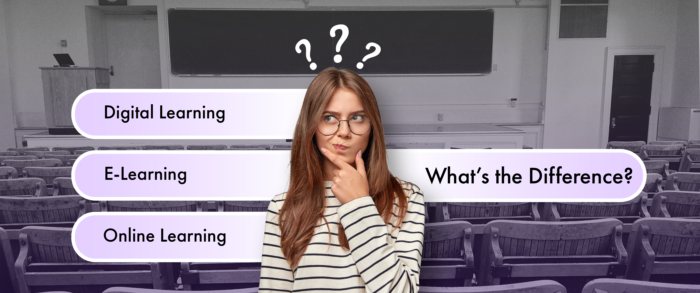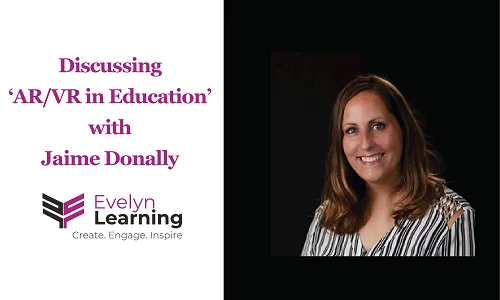In the past, possibly the only way to learn was through school, but today you have a wide range of learning options. A variety of modern options for learning include eLearning, online learning, digital learning, in addition to classroom instruction. In this thorough article, you will be able to comprehend the differences between these various forms of learning. In addition, a brief overview of these learning methods will help you understand the differences between them.
What is Digital Learning?
Digital learning is the most broad term. Any learning that is supported by technology or by instructional practices that fully utilize technology can be considered digital learning. An aspect of digital learning involves learning the use of technologies in an effective way, the use of features such as blended or virtual learning, etc. Besides, digital learning involves the use of technology, digital content, and instructional methods. Of course, digital learning includes online courses as well. Besides, using digital tools like interactive whiteboards and tablets in a classroom also involves students conducting Internet research or watching online videos.
What is Online Learning?
Online learning is a term that is similar to digital learning, but slightly narrower. The benefit of online learning is that it allows you to study and teach from anywhere in the world. As a result, there is no need to commute from one place to another or maintain a rigid schedule. The majority of online coursework will be conducted through forums, shared files, email, chat, etc. Nevertheless, it does not imply that a teacher and student do not interact face-to-face. As long as the primary means of communication is online, coursework can be conducted in a classroom or at a distance.
What is E-Learning?
The term ‘e–Learning‘ describes a formalized teaching system that uses electronic resources. It should be noted that, while teaching can take place in or out of the classroom, the use of computers and the Internet is one of the main components of eLearning. In some cases, neither the teacher nor the student meets in person. Furthermore, the course material and communication are handled via email, forums, chat, or video conference. Occasionally, this type, of course is referred to as a “fully online” course.
Difference Between E-Learning and Online Learning
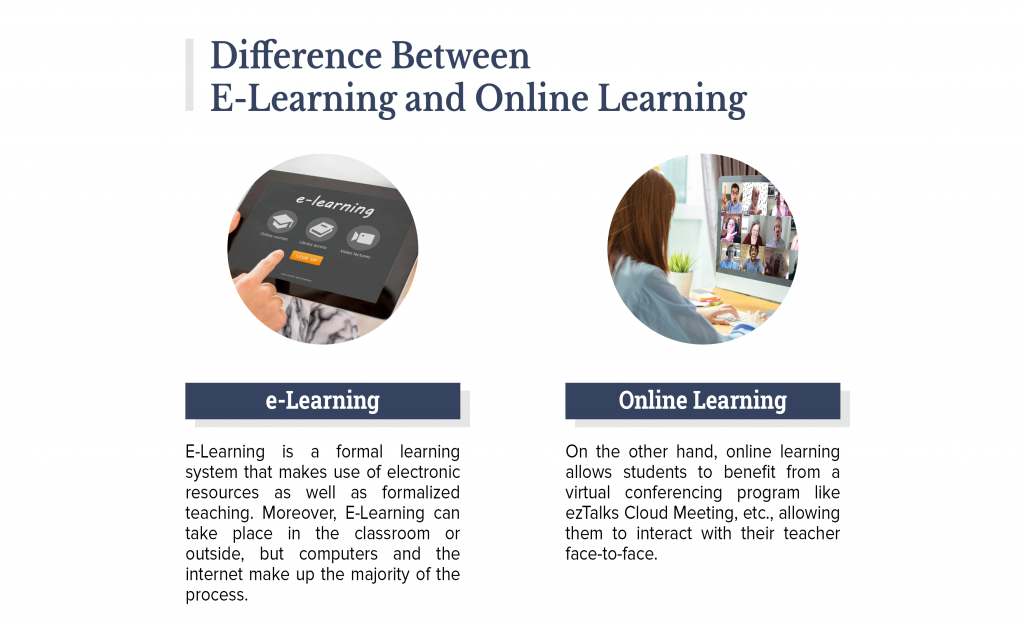
Features of E-Learning:
- A typical e-Learning course may contain PowerPoint slides and/or Word documents as well as a pre-recorded video lecture.
- Students are expected to review a substantial amount of information independently.
- PowerPoint slides typically contain textual explanations of the theory.
- Usually, video lectures are pre-recorded by teachers and show them browsing through PowerPoint slides while lecturing or simply talking.
- Such materials do not encourage students to think while simultaneously learning.
Features of Online Learning:
- A professional online tutor or teacher is available to assist online learners.
- Instead of watching a pre-recorded video lecture, the course is conducted live.
- A tutor or teacher discusses the materials with a student during a live session (such as worksheets, test papers, homework).
- With the help of the tools and features presented on the online platform, the learning and teaching platform can help both tutor and student communicate what they want to say. A common feature of online learning platforms is an interactive whiteboard, on which tutors and students can upload materials (e.g. textbook questions, test paper questions, theory to be explained).
- The features of the platform allow tutors and students to point out the information they are looking at easily.
- Additionally, students can ask questions or state their thoughts during the live lesson with online learning. Besides, teachers or tutors can answer all of their questions and clarify their doubts on the spot.
The main difference between eLearning and online learning is the amount of interaction. Students and instructors interact more during online learning, while eLearning is more self-paced.
Difference Between Online Learning and Digital Learning
As a new social process, online learning is now replacing both distance learning and traditional face-to-face classes. With a digital learning approach, you are learning using technology such as a computer, mobile device, internet, etc., which can provide you with a wide range of solutions for enhancing your knowledge and performance in real life.
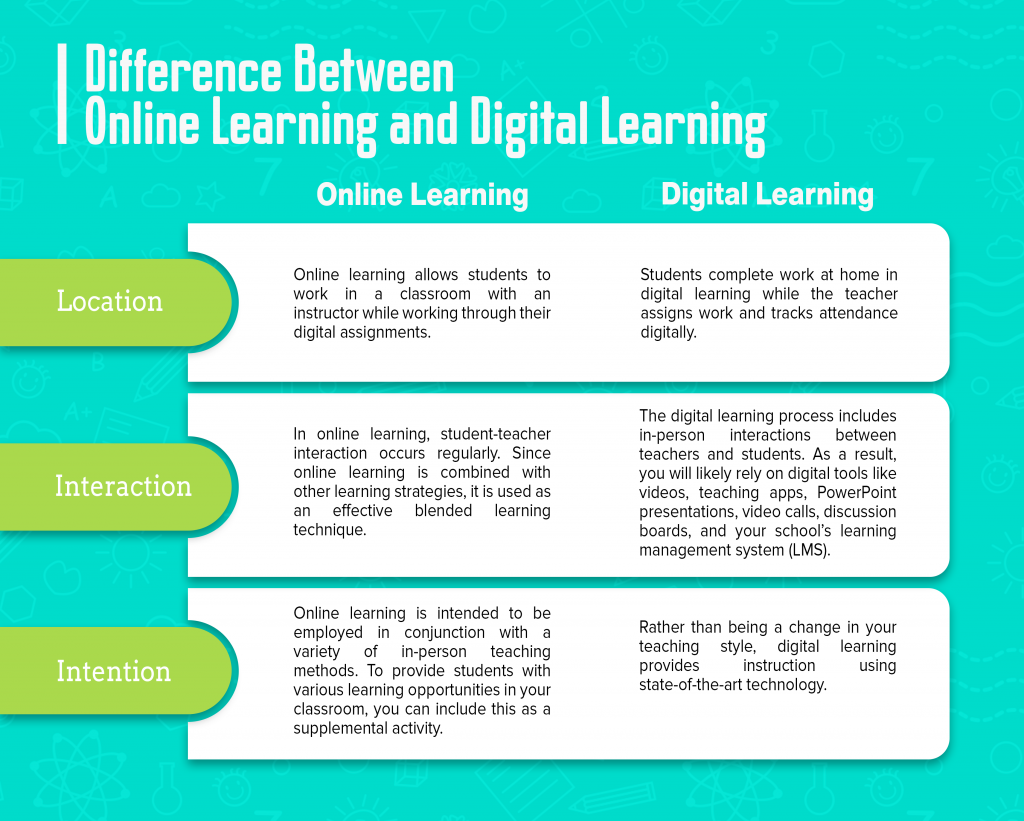
Difference Between Digital Learning and E-Learning
Despite sounding similar, there are subtle differences between them.
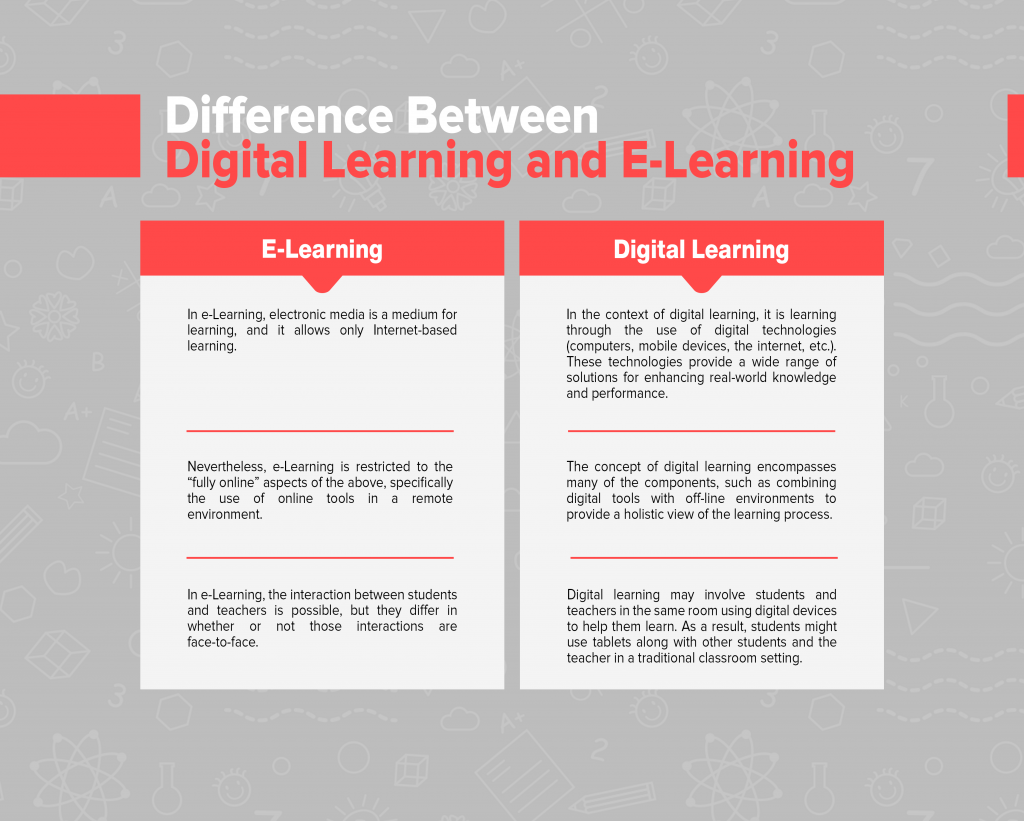
In recent years, education and the mediums of education have undergone a significant change. An individual can determine which educational method works best for him or her. Increasingly, students are becoming more independent and less hesitant to seek education on their own. Thanks to the internet and other modern advancements, students can receive education from anywhere in a variety of ways.
For more information on preparing for the LSAT, visit our blog.
Create. Engage. Inspire.

